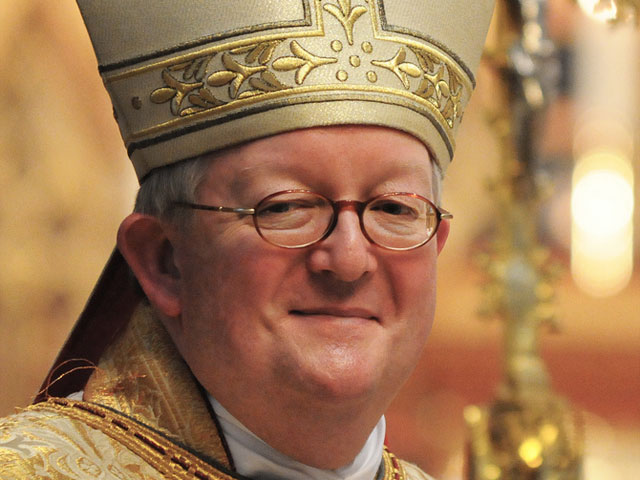The line between criticism and carping is not always clear. A story may appear to be well written, well sourced, balanced and complete to a casual reader. The same story, however, may appear naive, incomplete or wrongheaded to someone who has knowledge or opinions on the issues.
An article in Wednesday’s Guardian entitled “Gay mass services in Soho abolished by archbishop of Westminster” illustrates this problem. Taken on its own terms, this article is very good. However, to those who have been following the Soho masses controversy in the Catholic Church in England, this story prompts a “yes, but …” reaction, as it is written in the belief that the Roman Catholic Church is a unitary structure with a common doctrine.
While that may be true on paper, that is far from true in practice. The Catholic Bishops’ Conference of England and Wales (BCEW) does not and has not shared the same views on social and moral issues as Popes John Paul II and Benedict XVI. For those unencumbered with a knowledge of English ecclesiastical intrigue, the Catholic Church may appear a monolith — it isn’t. But is it fair to critique an article in a general interest newspaper for not telling the story to the satisfaction of those in the know?
The lede to this story begins:
The Archbishop of Westminster, head of Roman Catholics in England and Wales, has ordered that special fortnightly “Soho masses” for gay and lesbian churchgoers in central London are not appropriate and are to be axed.
The services, intended to be particularly welcoming to lesbian, gay, bisexual and transgendered Catholics, had been held at Our Lady of the Assumption church in the West End for six years with the blessing of senior clergy but had attracted criticism from traditionalists.
The story then moves to analysis, noting this will be seen as a victory for “traditionalists” within the church. And the curtailment of the Soho masses comes as the church battles the coalition government over its plans to introduce gay marriage in England and Wales.
The article gives a clear summary of the announcement made by Archbishop Vincent Nichols, reporting “the archbishop is said to believe that the pastoral care of the lesbian and gay church community should now be uncoupled from the sacrament of Mass, and that the [gay] community should not be singled out to have ‘special’ masses.”
The Catholic Church will continue to offer “pastoral care” to gays and lesbians “on Sunday evenings at Farm Street Church of the Immaculate Conception in Mayfair.” And in an interesting twist, the church that hosted the Soho masses will be turned over to the use of the “Ordinariate of Our Lady of Walsingham, the body set up by Rome to cater for those who have defected from the Church of England to the Catholic church.”
The article notes the existence of the Soho masses had angered traditionalists who saw the services as a challenge to the church’s teaching on human sexuality, and then cites extracts from the archbishop’s letter that re-iterates the church’s teaching on these issues. The story closes with quotes from two conservative Catholic critics of the Soho masses, who welcome the news.
For the Guardian, this was a remarkably neutral report — that shaded towards the conservative side. No liberal voices appeared in the story attacking the church for homophobia or insensitivity to counter the two conservative voices. The article was also framed in a neutral tone, not picking sides — reporting the facts of the archbishop’s letter without comment.
Save for the absence of a liberal response, on its face this article passed the test of sound journalism — and as the story was framed about the announcement and not the reaction, the absence of contrary voices was not fatal. It allows the Guardian to come back to the issue with a second day story.
Yet, I was struck by the absence of a paragraph or clause that reported the end of the Soho masses was an about face for the archbishop. The article notes this was a victory for traditionalists, but does not go on to say that hardly any of the hierarchy are traditionalists — and that includes Archbishop Nichols.
The always readable, and quotable, Damian Thompson of the Daily Telegraph and Catholic Herald coined the phrase the “Magic Circle” to describe the liberal block that controls the hierarchy of the English Catholic Church. The Magic Circle (a wonderful phrase — if Thompson is not the author, he nonetheless has given it cachet) has safely ignored directives from Rome to conform its practices to Catholic teaching. The Catholic Herald reported in February 2012 Archbishop Nichols defended the Soho masses while the Catholic World Report had a 2011 story that noted the archbishop called for critics of the Soho masses to be silenced.
Now the archbishop has silenced the Soho masses. What happened to cause this extraordinary change? Is Archbishop Nichols shocked, shocked to find that gambling is going on in here that the Soho masses convey false teachings on Catholic moral doctrine?
And, the site of the Soho masses will now be turned over the Anglican Ordinariate — again, extraordinary. The influx of conservative Angl0-Catholics into the Ordinariate has been fought by the Magic Circle through delay, obstruction and (I believe) a degree of venality. What has happened to produce the sea change in the CBEW?
While this article gives good treatment in 750 words to the Soho masses announcement, it does not go down deep into the story and answer the question “why”. Now, is this a problem? I would expect the Catholic Herald and other specialty publications to focus on the ecclesiastical and bureaucratic infighting that led to this announcement. But should the Guardian wade into these waters? What say you GetReligion readers? Is my critique justified or am I carping — asking that the Guardian to be something that it is not.











